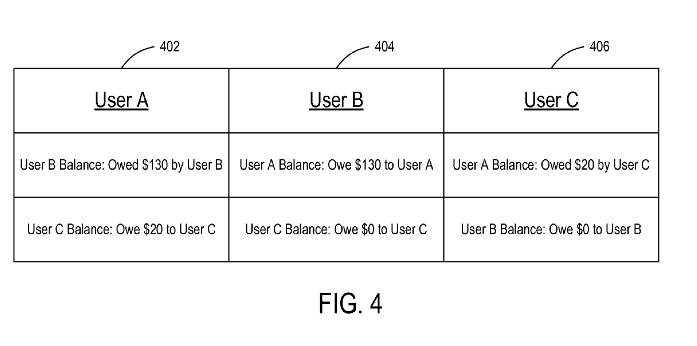No Deposit Bonus Casino Promotions at Sky Vegas
6 Agosto 2021Bedava Indir Casino Pin Up: Uygulamadaki Masa Oyunları Ve Yuvaları
7 Agosto 2021What is Primary Deficit?


While the Joint Committee on Taxation expected that the cuts would stimulate growth by 0.7% annually, thereby offsetting some of the lost income, the deficit would increase by $1 trillion over 10 years. Governments could borrow money and increase spending as part of a targeted fiscal policy. Keynes rejected the idea that the economy would return to a natural state of equilibrium on its own. Instead, he argued that once an economic downturn set in, for whatever reason, the fear and gloom that it engenders among businesses and investors would tend to become self-fulfilling. That, it turn, could lead to a sustained period of depressed economic activity and unemployment. Though the phenomenon leads to negative results by increasing the national debt, it also has some positive impacts.
In simpler terms, the government’s borrowings excluding the interest payment is the primary deficit. Public sector net borrowing is a British term referring to the fiscal deficit, where government expenditures outpace government revenue. Due to continuous borrowing, the revenue deficit can rise, which further results in the rising of the fiscal deficit as well.
What is the difference between fiscal deficit and revenue deficit?
Fiscal deficits are negative balances that arise whenever a government spends more money than it brings in during the fiscal year. This imbalance—sometimes called the current accounts deficit or the budget deficit—is common among contemporary governments all over the world. The increase in government expenditure leads to a rise in the aggregate demand, thereby making firms incapable of meeting the demand, which causes inflation, i.e., the rise in the prices of the products. On the other hand, the increasing demand calls for more workforce, which enhances the employment rate, strengthening the economy at the same time.
We have seen that the government’s borrowing requirement includes accumulated debt and interest payment on the debt. If we deduct ‘interest payment on debt’ from borrowing, the balance is a primary deficit. It shows how much government borrowing will meet expenses other than interest payments. Thus, zero primary deficits or implications of primary deficit when zero mean that the government has to borrow only to make interest payments. Government expenditure on goods and services and resources mobilised by it through taxes, etc., are important factors that determine aggregate demand in the economy.
Also, primary deficit shows the borrowing requirements needed for meeting the expenditure of the government. A fiscal deficit is calculated as a percentage of gross domestic product , or simply as total dollars spent in excess of income. In either case, the income figure includes only taxes and other revenues and excludes money borrowed to make up the shortfall. It is an indicator of the fact that the government or the organisation in consideration is not raising enough money to meet its basic needs and the provisions of schemes and services extended by it. For example, when government spends more than what it collects by way of revenue, it incurs revenue deficit.
To reduce fiscal deficit to 3 per cent requires drastic cut in non-productive revenue expenditure which is a difficult task. In India, attempts have been made to reduce fiscal deficit by curtailing capital expenditure which is incurred on projects of capital formation and other developmental activities. This is not a desirable way of reducing fiscal deficit fiscal deficit is always greater than primary deficit because this adversely affects economic growth. Revenue Deficit is the excess of the government’s total revenue expenditure to its total revenue receipts. Revenue Deficit is only related to revenue expenditure and revenue receipts of the government. Refers to a situation where the government does not have sufficient income to handle the expenditures.
The twin deficit issue, particularly the expanding current account deficit, could amplify the impact of more expensive imports and devalue the rupee, further escalating external imbalances. Firstly, through borrowing by the government from the market, both inside and outside the country. On this borrowing, the government has to pay rate of interest annually. Apart from that it has to pay back the internal and external debt taken.

Fiscal deficit is a more comprehensive measure of budgetary imbalances. Thus, we see that when the government’s total expenditure, both revenue and capital expenditure, exceeds its revenue from taxes and other normal receipts, fiscal deficit is created. A primary deficit is equal to a fiscal deficit minus interest payments on previous borrowings.
Understanding the Fiscal Deficit
Thus, all deficits have the effect of reducing the potential capital stock in the economy. This would differ if the Federal Reserve monetized the debt entirely. This is initially done through the sale of government securities, such as Treasury bonds (T-bonds).
Revenue deficits happen due to the insufficiency of the government’s funds to meet the expenditure. A fiscal deficit is the shortage of monetary or financial resources that a government suffers from when its expenditure exceeds the revenue it generates in a fiscal year. It is calculated as the difference between the total expenditure and total income and is denoted as a percentage of the gross domestic product .
Thus, the primary deficit is a narrower concept and a part of the fiscal deficit because the latter also includes interest payments. It is generally used as a direct measure of fiscal irresponsibility. The difference between fiscal deficit and primary deficits reflects the number of interest payments on public debt incurred in the past. Thus, a lower or zero primary deficit means that while interest commitments on earlier loans have forced the government to borrow, it has realized the need to tighten its belt.
The primary deficit indicates the number of expenses, other than the interest payments, that are going to be met by government borrowings. A higher revenue deficit indicates that the government should either cut short its expenditures or should increase its revenue income to meet the consumption demands. Any number of economists, policy analysts, bureaucrats, politicians, and commentators support the concept of government running fiscal deficits, albeit to varying degrees and under varying circumstances. Even though the long-term macroeconomic impact of fiscal deficits is subject to debate, there is far less debate about certain immediate, short-term consequences. These tax cuts were expected to total $1.5 trillion over 10 years.
- The primary deficit indicates the number of expenses, other than the interest payments, that are going to be met by government borrowings.
- When the government spends more than what it earns, it has to borrow money from different sources to cover the shortage of funds.
- It is generally used as a direct measure of fiscal irresponsibility.
- Such a deficit occurs because the U.S. government currently spends more than it receives.
Such a deficit occurs because the U.S. government currently spends more than it receives. This gap between income and spending is subsequently closed by government borrowing, increasing the national debt. Budget DeficitBudget Deficit is the shortage of revenue against the expenses. The budgetary deficit could be the sum of deficit from revenue and capital account. The latter signifies the inability of the government to handle even the usual expenditures.
A deficit is usually financed through borrowing from either the central bank of the country or raising money from capital markets by issuing different instruments like treasury bills and bonds. Hamilton saw deficits as a means of asserting government influence, similar to how war bonds helped Great Britain out-finance France during their 18th-century conflicts. This practice continued, and throughout history, governments have elected to borrow funds to finance their wars when raising taxes would have been insufficient or impractical. It is very important to know the major difference between fiscal and revenue deficits in today’s time. For that matter, let us compare both as fiscal deficit vs revenue deficit.
The government could use the method of deficit financing; i.e., printing of new currency notes. This can cover payments on debts by issuing securities through the issue of new currencies by RBI. It harms the development and growth of the country due to the increase in the number of borrowings, creating a burden on the upcoming generations.
thoughts on “Difference between Fiscal, Primary & Revenue Deficit”
While the former receives money and clears the national debt, the latter gets a chance to get out of an economic crisis, if any. A fiscal deficit refers to the economic situation when a nation’s government spends more than what it generates as revenue. The current account deficit touched a record of more than 5% of GDP in 2014.
When there is a deficit in the budget of the government, it spends more than it collects resources through taxes and non-tax revenue. In recent years there have been huge budget deficits in India which have created large excess demand in the economy. This has resulted in inflation or sharp rise in the general level in prices. The deficit may occur either in the revenue budget or capital budget or in both taken together.
A zero primary deficit generally means that government has to resort to borrowing just to make payment of interest. The latter is the total debt accumulated over years of deficit spending. A fiscal deficit is a shortfall in a government’s income compared with its spending. The government that has a fiscal deficit is spending beyond its means. A deficit can be defined as a value by which the total amount falls short of a reference amount. In terms of economics, a deficit is an excess expenditure made by a body apart from the revenue in a reference period.
Create your FREE Financial Plan
A total number of vacancies are released for SSC CGL Recruitment.The SSC CGL Tier-II exam is scheduled to take place from 2nd March to 7th March 2023. SSC CGL 2022 Tier I Exam was conducted from 1st to 13th December 2022. The SSC CGL Eligibilityis a bachelor’s degree in the concerned discipline. To prepare based on the same practice with our SSC CGL Mock Tests.
It implies that the money supply increases, creating inflationary trends. Therefore, if at all it is unavoidable, deficit financing should be kept within safe limits. Revenue deficit refers to the excess of revenue expenditure over revenue receipts.
It’s sometimes confused with the national debt, which is the debt the country owes as a result of government borrowing. Total government debt has real and negative long-term consequences. If interest payments on the debt ever become untenable through normal tax-and-borrow revenue streams, the government faces three options.
